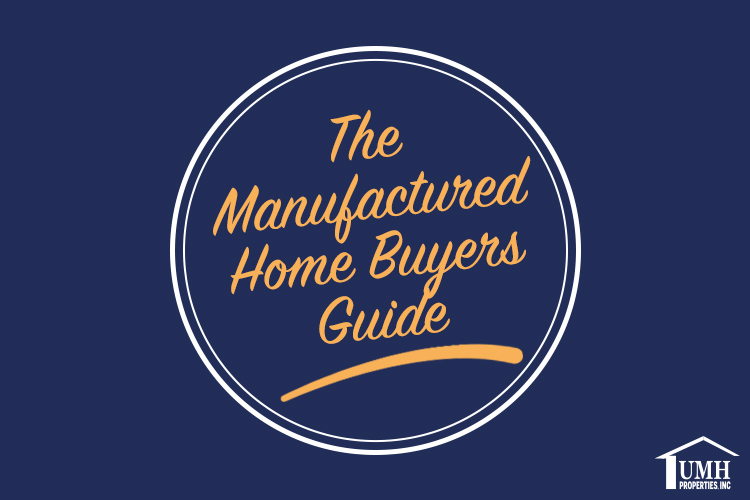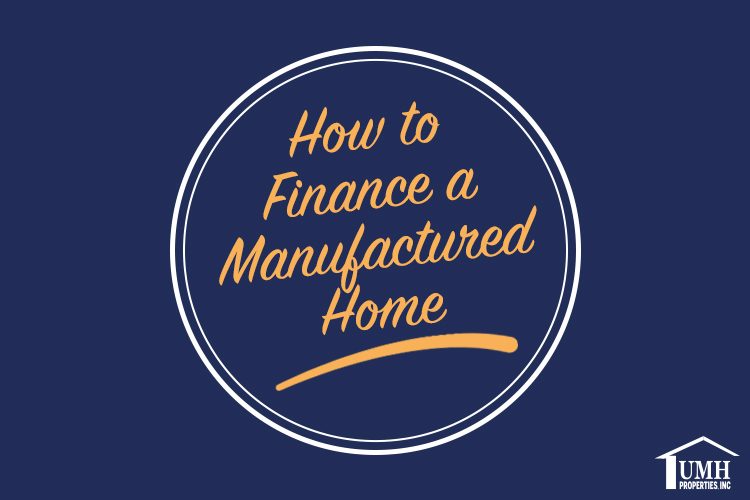The Manufactured Home Buyers Guide
Buying a manufactured home? This guide includes all you need to know about home buying – including financing, manufactured home loans, comparisons and features, buying new vs. used, placing your manufactured home, designing a manufactured home and more.
Should you buy a manufactured home?
If you’re here, it means you’re probably taking steps towards buying a new home. Congratulations! There are few things more rewarding than owning your own home.
If you’re considering a manufactured home as an option, you’re probably wondering how they stack up against other home types. So, first thing’s first.
What is a manufactured home?
Some people think of “mobile homes” when they think of manufactured homes. However, mobile homes are actually older, lower quality and under-regulated. In 1976, manufactured homes become HUD-approved, which means that they must be built with the same standard quality as stick-built homes. In 1980, the Housing Act ruled that “mobile homes” should be referred to as “manufactured homes” for structures built after 1976. Nowadays, manufactured homes often even exceed the quality standards and dependability of older stick-built houses!
Manufactured homes are constructed off-site in climate-controlled facilities and moved to location once completed. From the inside, most people wouldn’t be able to tell the difference between a manufactured home and a stick-built hose. From the outside, they do have some notable features:
- Most manufactured homes have vertical paneling along the bottom, called a “skirt.” That’s where the crawl space of the home is.
- They are long and rectangular in shape, so that they can be easily transported on the highway.
- Many manufactured homes have porches, and even carports or garages.
- They come in two standard sizes: Single-section and multi-section.
Other home types
Modular houses
Modular homes, like manufactured homes, are built in factories or off-site facilities. Unlike manufactured homes, they are usually larger and designed to look like stick-built homes. are built on permanent foundations like a basement or a crawl space, and comprised of many modules assembled on top of it. The possible configurations are limitless! Modular home builds can be very impressive, but they generally come at a higher price point than a manufactured home.
Stick-built houses
Stick-built houses are probably what you think of, when you think of a house. They are built on-site, and as such can be subject to weather and climate conditions during the construction process.
Tiny homes
A tiny house is precisely what it sounds like. Ranging from 100-400 square feet, a tiny house is built to be minimalist and down to the essentials. For people who desire a simpler life, an efficient space, and a good reason to downsize their belongings, tiny homes are a trend that’s catching on. How do manufactured homes compare to other home types?
Here are some of the factors that a potential homebuyer should consider: Cost, square footage, lot placement, customization, and energy efficiency. Let’s explore how manufactured homes stack up against other build types.
Cost
Tiny Home: $23,000 (source: realtor.org)
Manufactured Home: $69,000 (source: census.gov)
Stick-Built Home: $269,000 (source: census.gov)
Modular Home: $211,638 (source: modularhomeowners.com)
Price is a key factor in the accessibility of home ownership for many Americans. The average listing price of a manufactured home is less than one quarter the average cost of a stick-built house, and closely comparable to a modular home as well. Tiny homes rank #1 in affordability, unless of course you’re looking at price per square foot. They come with their own caveats, as we’ll see below.
Size
The sticker price of a home is one thing, but what about cost per square foot? Tiny homes are a romantic idea for many, but the minimal living space might not work out very well for growing families, or elderly homebuyers who aren’t willing to climb a ladder to their bed every night. That’s where the size of your home factors in.
Tiny Home: 100-400 sq. ft.
Manufactured Home: 850-1,600 sq. ft.
Stick-built Home: 1,400-2,399 sq. ft. (source: houseplans.com)
Modular Home: 1,600 sq. ft and up
With tiny homes, you are locked in to a restrictive size for easy mobility. Manufactured homes must be a built to lengths and widths that are legal for highway transportation, but unlike tiny homes, can be assembled as a multi-section home for more space. Stick-built and modular homes, of course, vary from quite small to Beverly Hills-level large! But due to more restrictive and expensive building costs, both stick-built and modular homes will have a higher price per square foot, meaning of all four options, manufactured homes offer the most bang for your buck.
Lot Placement
Your home is where you will live – but where will your home live? For people who have never bought a home with mobility before, this might not be something they immediately think of. Obviously, for stick-built homes, this is not an issue, but what about the rest of them? Modular homes require a foundation, and as such, people who purchase modular homes almost always own the land they place them on. Once they are assembled, they cannot be moved, so for this category, they are again comparable to site-built. And what about the tiny home? In many places, it’s hard to live in a tiny house legally. Building codes, local zoning laws and county ordinances all must factor into tiny house planning. Alternative forms of affordable housing tend to address this issue better than their tiny counterparts. Manufactured home builders follow federal Housing and Urban Development codes, so they can often be placed anywhere that is zoned for a stick-built home (though this varies by county ordinances). Plus, many buyers have the luxury of placing their new home in a community that has already been zoned accordingly. That means not having to sort out your own plumbing, electricity, and water hook-up which is something I think most of us could do without!
Customization
Everyone loves a good “demo day” on HGTV (short for demolition), but in reality, home renovations are a notorious nightmare. For older stick-built homes, the plumbing, electrical wiring and other materials hiding behind your walls are a mystery and potential hazard that can limit your modifications. Brand new stick builds are costly and timely. Modular homes can be very customizable; modularity introduces near infinite possibility! Many modular home builders have pre-spun floor plans that can be customized to your home lot and design desires. Tiny homes, while known for their craftsman character, do have limitations on customization. Because the space is so small, most features need a dual purpose. For example, a couch with hidden storage, or a table that folds up when not in use. The need for extreme functionality sometimes comes at the cost of personal style. Not only are manufactured homes the easiest to customize if you’re buying new, but manufactured home customizations have also blossomed over the years. A far cry from the cookie-cutter pre-fabs of decades ago, most manufactured home builders offer a wide range of customizations. From cabinets to floor plans to appliances, the growing options give buyers the opportunity to design the home of their dreams. Also, all of the components put in manufactured homes today, are the same materials used on site-built homes. If you need to do a repair, you can use any product you find at Lowe’s or Home Depot in your manufactured home.
Energy Efficiency
If energy efficiency is what you’re after, the average tiny home might win out. But for years manufactured homes have been designed with energy efficiency in mind. They are the original “green living” home, and are still far more efficient than your average stick-built or modular home. Many manufactured home builders are Energy Star Certified, which means their homes are designed to meet the EPA’s strict guidelines for energy efficiency. This includes standards for effective insulation, high-performance windows, tight construction ducts and appliances and heating/cooling systems that use less energy. So while the tiny house movement tightly couples with less consumption and the “off-grid” lifestyle, manufactured homes are designed to maximize efficiency without sacrificing comfort and amenities.
So what’s the verdict?
Ultimately, the choice comes down to your budget, lifestyle and home aspirations. But for homebuyers looking for an affordable, reliable home, manufactured homes are a great choice! Read on to learn more about the logistics and decisions involved in buying your first manufactured home.
Buying Used vs. Buying New
Of course, the most important thing for new homebuyers is the quality of their home. A lot of this can depend upon the age and history of the home. Unlike site-built homes, manufactured homes depreciate in value over time. Used manufactured homes for sale will often be less expensive than new ones, but new ones will often be easier to secure a loan for. So which is the better option?
Buying Used
If you plan on buying a used manufactured home, there are some things you should know. For starters, any manufactured home built before 1976 will not have been held to HUD regulations, and should always be considered a risk. And not all used manufactured homes can be moved, so if your plan includes placing the home on a different lot, be sure to verify that this is possible. Homes that have been extensively renovated or placed on foundations may be permanently fixed to the land they reside on. And of course, as with anything previously owned, be sure to adequately inspect a used manufactured home before purchase. Looking for signs of water damage, deterioration and assessing regular wear and tear before you buy will help mitigate any surprises! If it all checks out, a previously owned manufactured house can make a wonderful new home.
Buying New
Buying new is appealing for many reasons. For one thing, buying a new manufactured home through most manufacturers means you can customize it to your liking: cabinetry, appliances, flooring and more! And while a new home will surely be more expensive than a used one with the same specifications, there are some financial incentives. Loans may be easier to secure, and most new manufactured homes come with warranties.
Financing a Manufactured Home?
So, you’ve looked at manufactured homes for sale, found your dream home, and now you’re wondering how to finance it. Whether you’re a first-time homebuyer or have purchased a home before, the process of home financing for manufactured homes is unique and usually leaves people with a lot of questions. Like: What credit score do I need to buy a manufactured home? Is getting a mortgage for a manufactured home different than a mortgage for a new stick-built house? Or, Do manufactured homes come with warranties? In this section, we’ll share our home-buying expertise with you and help answer some of these questions, so you can finance your manufactured home worry-free.
Click Here to Read More of our Blog Post on Financing A Manufactured Home to answer all of your quesions including:
- Loans for Manufactured Homes
- Warranties on Manufactured Homes
- and more!
Placing your manufactured home
We touched briefly on lot placement for manufactured homes earlier in this article. Now, let’s get into more detail.
When it comes to finding a place to put your manufactured home, it really comes down to two main choices: you can place it on land that you own, or you can place it on rented land within a land-lease community. For either option, there are three things to consider: legality, cost, and logistics.
Legality
Before you purchase that perfect land parcel, there are some boxes that need to be checked!
Zoning laws for residential housing apply to manufactured homes as well as stick-built. It’s crucial that you ensure with your county or municipality that the zoning and land use laws on your property allow for the placement of a manufactured or modular home. In the case of older manufactured homes and mobile homes, due to modern building requirements, it is possible that your home may not be legally placed on land in certain municipalities, even if it’s zoned for residential housing.
If you would like to place a manufactured home on owned land, make an appointment to discuss your plans with a zoning administrator in your county before you make any purchasing decisions.
Logistics
Although your home has been pre-fabricated in a factory, there are still some installations that can only be completed on-site: namely, power, foundation & plumbing.
Just because your land is zoned appropriately doesn’t necessarily mean it will support a septic system. Having land that meets the legal and structural requirements for a septic system is critical. For something like this, it is best to have a licensed professional do their due diligence.
And unless you’re planning on going “off-grid,” water and electricity need to be hooked up. Get bids from contractors who can hook up to existing infrastructure; or, if there is none, have your land surveyed to see if it’s suitable for a well or city water.
Cost
Cost is a huge factor to assess when considering where to place your manufactured home. The upfront investment for buying your own land can pay off in the long run, but much of the process in the short term can be costly, difficult and time consuming.
Land-lease communities provide a place for your home to live, usually for a small monthly rental fee. And while you’ll never own the land that you’re home lives on, each home is placed in a beautiful community. Plus, all of UMH’s land-lease communities take care of all of the aforementioned legality & logistics for you, which gives this option huge appeal. All you need to do is collect your keys when it’s time to move in!
Whether you decide to take the long route to land ownership, or settle for the security & savvy of a land-lease manufactured home community, placing your home is a huge accomplishment. Once you’ve made it this far, relish the rewards. Move in, get comfortable, throw a party, do some
landscaping and enjoy homeownership in all its glory!





